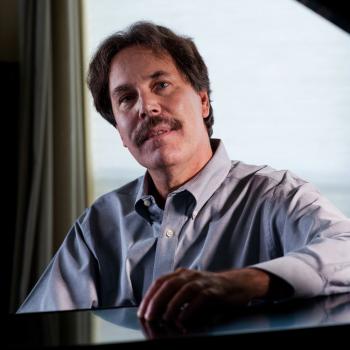Being able to read well is the prerequisite for learning everything else. So teaching kids how to read is the most important task of primary education. But how to do that has been controversial. Now, though, research has settled the issue about the best way of teaching children how to read. But some teachers and school districts are refusing to follow the science.
Time Magazine, no less (not a conservative publication) has published an eye-opening article on the subject by Belinda Luscombe entitled Inside the Massive Effort to Change the Way Kids Are Taught to Read.
Traditionally, reading has been taught by phonics. That is, attention to the sounds the letters symbolize, which in turn are put together to form words. But since the 1980s, a different approach emerged and came to dominate elementary school reading curricula and classrooms. The whole language approach teaches children to recognize entire words visually, by what they look like. Students are also encouraged to identify words by their contexts, to “construct meaning,” and to immerse themselves in reading material relevant to them. The assumption is that learning to read can happen “naturally,” like learning to speak. (See this for a fuller account of the approach.)
Unfortunately, since the whole language approach has been introduced, reading proficiency rates have plummeted. In 2019, only 35% of fourth-graders were proficient in reading. Only 21% of low-income children, 18% of black children, and 23% of Hispanic children were proficient.
Yes, some children can learn to read with the whole language method, but the mental gymnastics it requires are beyond the comprehension of many other children. Good students can figure out how to read no matter what method is used to teach them, but others are at a loss when they are expected to “drop everything and read” when they don’t know how to read and the ability to do so is not coming “naturally.”
As university teacher training programs and curriculum publishers went all in for whole language, classical schools, homeschoolers, and traditionalist teachers stuck with phonics.
In 2000, the National Reading Panel, consisting of a large group of literacy experts, met to settle the issue of what method of teaching reading works best. Reviewing hundreds of studies, they issued a report that concluded that what students need in order to learn how to read well is phonics. That is to say, “phonemic awareness” (attention to sounds), “instruction in phonics,” the development of fluency, vocabulary instruction (learning new words), teaching the comprehension of texts, and preparing teachers to do all of these things.
Such a finding should be obvious. Our writing system is alphabetic, breaking down words into their constituent sounds that are symbolized by letters. School-aged children mostly know how to speak. If they learn 26 letters and 44 sound combinations, plus some exceptions to the rules, they can read. If they must learn the appearance of words, they will have to memorize thousands of shapes for basic literacy, and they will have no strategy to decode any new words they encounter. Mass literacy arose in the West because the alphabet made reading easy, whereas in, for example, China, whose writing system is based on ideograms–a complicated visual representation of each word–literacy until recently was restricted to a small elite. It is just harder to learn to read in the Chinese writing system. Whole language exchanges our alphabetic system for an ideographic system, with predictable results.
The National Reading Panel report is entitled Teaching Children to Read: An Evidence-Based Assessment of the Scientific Research Literature on Reading and Its Implications for Reading Instruction. This has led to further work confirming the superiority of phonics known as “the science of reading.” Since the report, some states have called for the implementation of “evidence-based” or “research-based” curriculum. All of those are references to the use of phonics to teach reading.
The Wikipedia article on Whole Language gives an excellent summary not only of the approach but also why the science has demonstrated conclusively that it does not work. For example, “Unlike language, literacy is not a human universal but a human invention (much as children learn to walk without being taught, but not how to drive a car or fly a helicopter).”
The new science of reading has led to a revival of phonics in many schools. Where “evidence-based” approaches have been adopted, reading scores have shot up. Nevertheless, opposition to teaching phonics has arisen from teachers, not because they disagree with the research but because they want to teach something else.
In the Time article, Luscombe reports on what happened in Oakland, California:
As a teacher in Oakland, Calif., Kareem Weaver helped struggling fourth- and fifth-grade kids learn to read by using a very structured, phonics-based reading curriculum called Open Court. It worked for the students, but not so much for the teachers. “For seven years in a row, Oakland was the fastest-gaining urban district in California for reading,” recalls Weaver. “And we hated it.”
The teachers felt like curriculum robots—and pushed back. “This seems dehumanizing, this is colonizing, this is the man telling us what to do,” says Weaver, describing their response to the approach. “So we fought tooth and nail as a teacher group to throw that out.”. . .“Those who wanted to fight for social justice, they figured that this new progressive way of teaching reading [whole language] was the way,” he says.”
After reading rates plunged with the “new progressive way of teaching, Weaver is working to bring phonics back:
Now Weaver is heading up a campaign to get his old school district to reinstate many of the methods that teachers resisted so strongly: specifically, systematic and consistent instruction in phonemic awareness and phonics. . . .
Ironically, though teachers invoked “social justice” to oppose phonics, the NAACP and other civil rights leaders are getting behind Weaver’s attempt to bring it back. This is because improving the lot of black children requires that they be taught how to read. It is not “social justice” when only 19% of black children can read. As Weaver said, “We abandoned what worked because we didn’t like how it felt to us as adults, when actually, the social-justice thing to do is to teach them explicitly how to read.”
Another catalyst for returning to phonics, according to Luscombe, has been the parents of dyslexic children, who simply cannot learn with whole language but definitely can with phonics. Their lobbying has caused state legislatures to call for “evidence-based” reading instruction. Some 30 states have enacted laws or new policies to that effect, and 18 have passed laws requiring that teacher preparation programs make sure teachers known how to teach phonics. Recently, New York City mayor Eric Adams has announced that schools in his city–the biggest school district in the country–would be required to use phonics.
This is case in which reality has broken in upon progressive educators, but many teachers are still pushing back against it in the name of their ideology. And, to be fair, because they were never taught to teach phonics and whole language is all they know how to do. The blame here goes to university Departments of Education. But things might be changing. Still, what Luscombe said about Oakland’s phonics program is telling: “It worked for the students, but not so much for the teachers.” She gives Kareem Weaver, the teacher who is working to bring back phonics, the last word:
“The lament is that when we started using new materials, the kids weren’t learning how to read, and to explain that, rather than looking at our materials and what we were doing, we focused on the kids and said, ‘Something’s wrong with them. Something’s wrong with our community. They’re too traumatized or too broken. Their families aren’t good enough. They’re poor.’ We explained the lack of learning in those terms, as opposed to saying, ‘Wait a second, what are we doing? And what did we do when things were working?’”
Photo via pxhere, CC0, Public Domain














